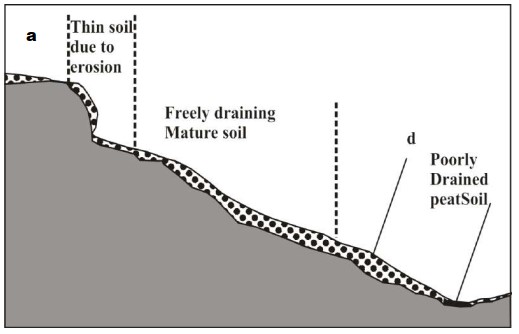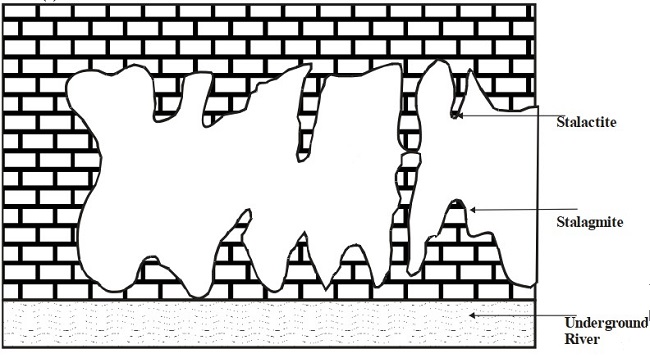Question 1
- Differential between the axis and orbit of the earth.
- Name three planets that have satellites.
Answer
- Axis – an imaginary line through the centre of the earth from North pole to South pole.
Orbit – The path in space which the Earth follows as it revolve/orbit round the sun - - Earth
- Mars,
- Jupiter
- Saturn
- Uranus
- Neptune
Question 2
- Distinguish between orogenesis and orogeny.
- List down three examples of fold mountains of the Alpine orogeny.
Answer
- Orogeny is the period of mountain building while Orogenesis is the process of fold mountain Formation
- - Atlas mountains of Africa
- The Alps mountain of Europe
- The Himalayas mountain of Asia
- The Rocky mountains of North America
- The Andes mountains of South America
Question 3
Use the diagram below to answer Q (a)

- Name the part of soil sequence labeled a and d.
- State any three importance of soils to plants.
Answer
- a - leached(soil with) lateritic cap
d - Thick (fertile) alluvial soil - - Provides anchorage for the plants
- Protects roots from damage
- Soil is a medium through which air, water and nutrients are made available to plants.
- Soil is the rooting zone of plants
- Pore spaces in the soil for good drainage is important for plant growth.
- Soil temperature affects the roots indirectly by influencing chemical and biological activities in the soil.
Question 4
- Define the term Karst scenery.
- In your answer booklet draw a well labeled diagram to show a limestone cave.
On it mark and namespace- Stalactite
- Stalagmite
- Underground river
Answer
- Karst scenery are the striking features found in limestone areas (where the action of water on limestone rocks dissolves the landscape)

Question 5
- Identify TWO factors that influence vegetation distribution.
- Name any two main types of natural vegetation zones found in Kenya.
Answer
- - Physiographic/topographical factors
- Edaphic/pedological factors
- Climatic factors
- Biotic factors - - Forest vegetation
- Savanna grassland vegetation
- Arid and semi-arid vegetation/scrub
- Swamp vegetation
- Heath and moorland vegetation
